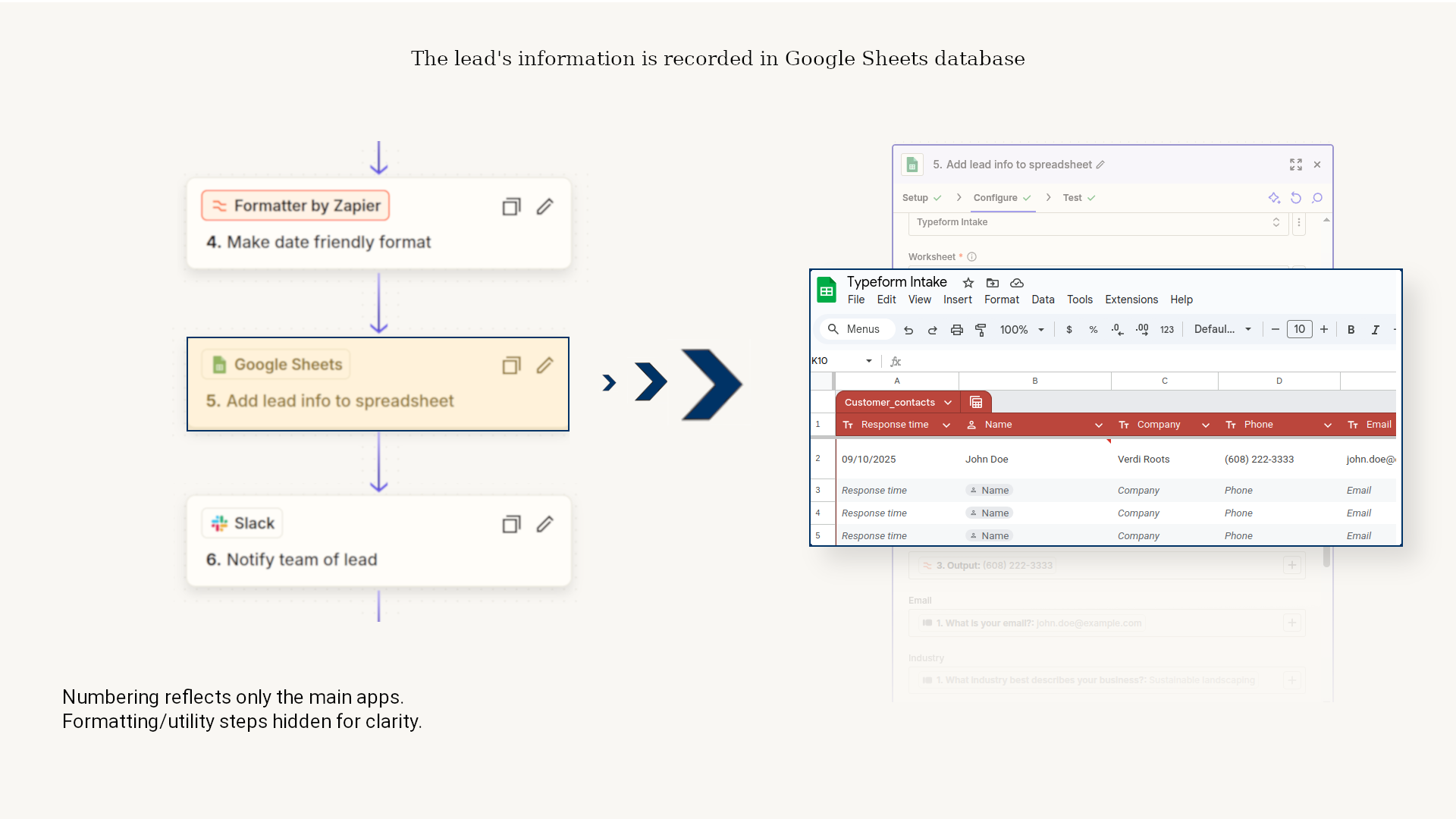How Automation Streamlines Lead Follow-Up
Challenge
In this example, we imagine a small bookkeeping firm receiving frequent inquiries through an online intake form. But without automation, staff must manually capture details and create follow-up tasks, a process that wastes time and risks losing leads.
This manual process creates three pain points:
Time-intensive: Copying form data into a task manager consumes valuable hours.
Missed opportunities: Without consistent tracking, some leads never receive timely follow-up.
Slower sales cycle: Delays in responding reduce trust and increase the chance prospects choose another provider.





Results
By automating lead intake and follow-up, the bookkeeping firm streamlined their process and eliminated wasted effort. The new system provided three key benefits:
Save time: Intake and follow-up tasks are created instantly, freeing staff from hours of manual data entry.
Capture every lead: Every inquiry is logged in Google Sheets, shared with the team via Slack, and tracked in Todoist — ensuring nothing slips through the cracks.
Respond faster: Prospective clients receive an immediate thank-you email and timely follow-up, improving trust and increasing conversion rates.
Automation transformed a disorganized, error-prone process into a reliable workflow that lets the firm focus on serving clients instead of chasing leads.

